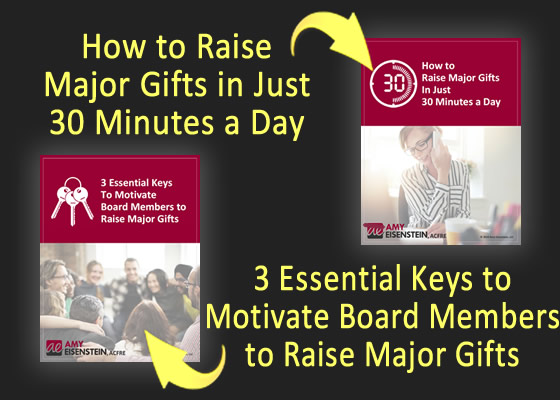
Fundraisers and nonprofit leaders write a lot. Whether you’re thanking donors, emailing board members, sharing an impact story, developing a case for support, or sending out a program update, the pressure to write clearly and with heart can feel like a full-time job.
The writing can be formal or informal. In an email, on your website, by mail, or as part of a grant application or funding request. And some days, the words simply won’t come.
My Personal Struggle with Writer’s Block
For more than fifteen years I’ve written a weekly blog, and every week I struggle against writer’s block. It’s become a family joke that Tuesday night is blog post night and “mom’s going to be in a mood.”
For this week’s post, all I could think about was the Maryland dad who has been deported without due process and sent to one of the scariest prisons in the world. His crime appears to be having the wrong tattoo.
I’m consumed with thoughts of, “How can I help? What can I do? I’ve got to say something.” But what could I say or do that isn’t already being said or done?
Another idea was writing about how to “make America kind again.” Is that even possible in this environment?
I considered asking you to call your representatives in congress and imploring them to save funding to PBS and NPR and Social Security and Medicaid and Medicare. Letting them know that you are against deporting people without due process. The list goes on and on.
In the coming weeks, it’s likely that I’ll write about some of those issues — and I hope you will too. Use your platform to shout out and stand up. We have to make noise in this vital moment, and writing is part of that.
10 Ways for Fundraisers to Beat Writer’s Block
With writer’s block on my mind, I decided to take another look at ways you and your nonprofit can handle writer’s block. Below are ten ways to keep your writing moving, even when your brain and your being would rather do anything else.
1. Lower the stakes.
You don’t have to write perfectly. Start with a draft or an outline. Get words on the page. Think of it as a rough draft, not a final piece. You can shape, edit, improve, and add stories later.
2. Change locations.
A new spot can clear your head. Take your laptop to a different room, a park bench, a coffee shop or even just a different corner of your office and facing a different direction. A small shift in scenery can get your creative juices flowing.
3. Set a timer.
Give yourself 15 minutes. Write without stopping until the timer goes off, no matter what comes out. Often, the hardest part is starting. Jot down titles, ideas, and lists of things you’ve encountered throughout the week.
4. Start with gratitude.
If you’re writing a donor communication and feel stuck, begin with gratitude. It’s a natural place to start and it centers the message. Be specific as possible about what you’re grateful for and why it matters.
5. Find a story.
Ask colleagues, volunteers, staff members, or clients about what’s happening in their lives and at work. This will help unearth a new story of struggle or success to share.
6. Collect quotes.
If you’re telling a story about impact, ask staff or program participants to share their thoughts. Sometimes their words can become the heart of the piece — and they might spark new ideas.
7. Walk away (briefly).
If you’re forcing it and nothing’s working, take a break. Do something else for 20 minutes. When you come back, the first sentence may be waiting.
8. Designate time.
You don’t have to write whenever inspiration strikes. Block out regular time on your calendar, just like a meeting, to focus on writing.
9. Remember your audience.
Think about the person who’ll open the email or read the letter. Picture them. Then ask yourself:
- What do they care about?
- What would you want them to feel after reading your message?
That can help get your creative juices flowing.
10. Ask AI.
Leverage technology when appropriate. Quickly brainstorm using Claude or ChatGPT to come up with a list of ideas or points. After you’ve written a draft, ask AI to help make it more articulate, succinct, and friendly.
Don’t Give Up
Even the best writers hit a wall. That doesn’t mean you’re out of ideas or talent. It simply means you’re human. Stick with it!
And if there’s something you’d like me to write about, please reach out or leave a comment below. I’m always in search of new topics and ideas.

Great piece, Amy! Love the idea of ‘Make America Kind Again, a.k.a. MAKA. Maybe we could start this desperately needed movement!!
Also, #9… think like the recipient of the message; what would they want to hear and how do you want to make them feel or respond to your message.
Finally… what to do when writer’s block hits– how I wish I could take my computer into the shower! There’s something about being in that space with water pouring on my head — it does seem to offer clarity and unlock creative juices.
Great post, great advice!
Another suggestion, if you’re working on a long piece is: so hallway through something. That way, when you come back the next day, you are on a roll straightaway.